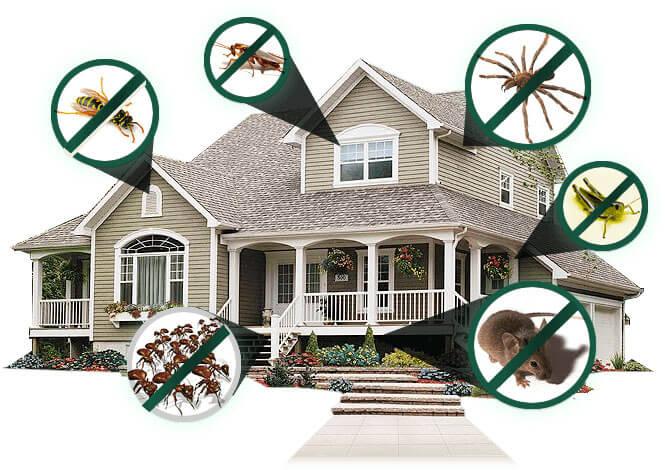Bed Bug Therapy Malfunction: Contrasting Chemical Vs. Non-Chemical Solutions
In the realm of bug control, particularly when managing the relentless problem of bed pests, the choice in between chemical and non-chemical treatment options can be a crucial one. Both methods offer distinct advantages and disadvantages, affecting variables such as efficiency, safety and security factors to consider, and general expense. By examining the nuanced information of each method, a clearer understanding of which course to seek in dealing with a bed insect infestation can be attained.
Efficiency of Chemical Therapies
Chemical treatments for bed pest invasions have been widely identified for their powerful and rapid efficiency in eradicating these parasites. When taking into consideration the effectiveness of chemical treatments, it is essential to understand that they can give a quick and complete remedy to a bed pest problem.
In addition, chemical therapies have the benefit of providing recurring effects, suggesting that they can remain to get rid of bed insects also after the initial application. This recurring action is particularly beneficial in combating any type of potential re-infestations. Furthermore, the fast activity of chemical therapies can bring relief to people encountering serious bed pest infestations, permitting them to gain back control of their home swiftly.
Security Worry About Chemical Solutions
One vital aspect that requires cautious consideration when making use of chemical options for bed insect treatment is guaranteeing the safety and security of residents and the setting. Exposure to specific chemicals used in bed insect therapies can lead to breathing issues, skin irritability, or other unfavorable responses, especially in individuals with pre-existing problems or sensitivities.
Additionally, the environmental influence of chemical services is an additional significant factor to consider. Some pesticides utilized in bed bug therapies might be damaging to advantageous pests, wildlife, and ecological communities if they leach right into the dirt or water systems. It is crucial to utilize chemical therapies judiciously, complying with safety and security guidelines, and thinking about much less hazardous choices to reduce these threats and ensure the reliable and safe administration of bed pest problems.
Benefits of Non-Chemical Methods
Thinking about the potential security worries and ecological impact connected with chemical remedies for bed bug treatment, discovering non-chemical approaches presents a promising alternative with a number of unique benefits. Non-chemical techniques provide a safer alternative for homes, especially those with youngsters, people, or animals conscious severe chemicals. These methods get rid of the risks of exposure to toxic substances, decreasing the capacity for unfavorable health and wellness impacts. Moreover, non-chemical treatments are environmentally pleasant, as they do not contribute to air or water pollution, making them a lasting option for insect my response control.
In addition, non-chemical solutions can be efficient in targeting bed bugs, including hard-to-reach locations where chemical therapies may not permeate - A1 pest control services charlotte. Methods such as warm therapy, vacuuming, steam cleaning, and bed mattress coverings provide detailed eradication without the use of unsafe chemicals.
Limitations of Non-Chemical Treatments

Additionally, non-chemical therapies frequently need numerous applications to accomplish effective elimination. This can be time-consuming and may not constantly assure full elimination of all bed insects and their eggs, particularly in covert or hard-to-reach areas.
Additionally, the success of non-chemical therapies heavily depends on proper execution and thoroughness, which can be challenging for people without specialist experience. Inadequate application of non-chemical approaches may lead to insufficient eradication, causing relentless infestations and the requirement for added treatments.
For that reason, while non-chemical therapies have their benefits, it is important to recognize these constraints and consider them when identifying one of the most efficient method for managing bed pest infestations.
Price Contrast: Chemical Vs. Non-Chemical Options
Given the limitations connected with non-chemical therapies, an essential aspect to assess in the context of bed insect administration is the price contrast in between chemical and non-chemical options. Chemical treatments generally include the application of insecticides by specialists, which can vary from $250 to $900 per room, depending upon the extent of the infestation and the dimension of the location to be treated. In contrast, non-chemical therapies like warmth therapy or heavy steam can be more pricey, with prices varying from $1,000 to $6,000 for an entire home. While the preliminary cost of chemical treatments may appear reduced, multiple therapies read may be required to fully eradicate the infestation, potentially boosting the total price. On the various other hand, non-chemical choices may offer a more environment-friendly and lasting option, although they can be cost-prohibitive for some people. Eventually, when considering the cost of bed pest therapy choices, it is essential to weigh the ahead of time expenditures against the effectiveness and lasting sustainability of the picked technique.
Conclusion

Thinking about the potential safety and security issues and environmental influence associated with chemical services for bed insect therapy, checking out non-chemical strategies presents a promising option with a number of unique benefits.Provided the limitations linked with non-chemical treatments, a crucial facet to review in the context of bed bug management is the expense comparison in between chemical and non-chemical choices. In contrast, non-chemical treatments like warm treatment or steam can be more expensive, with costs ranging from $1,000 to $6,000 for an entire home. While the first cost of chemical treatments might seem reduced, several treatments may be needed to totally remove the invasion, possibly enhancing the general price.In final thought, when comparing chemical and non-chemical bed bug therapy choices, it is vital to take into consideration effectiveness, security, advantages, constraints, and cost.
Comments on “Specialist A1 Charlotte Bed Bug Exterminator - Top Quality Solution Assured”